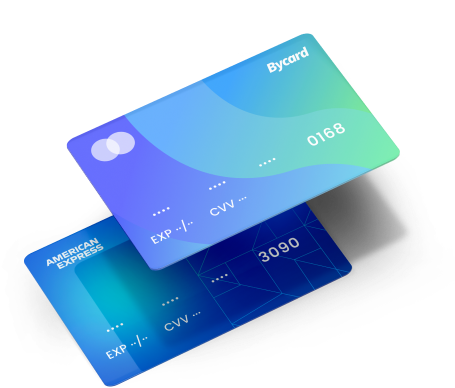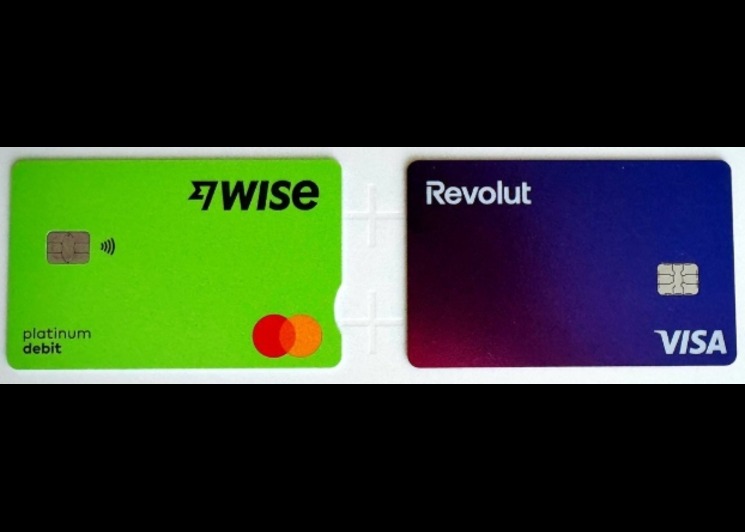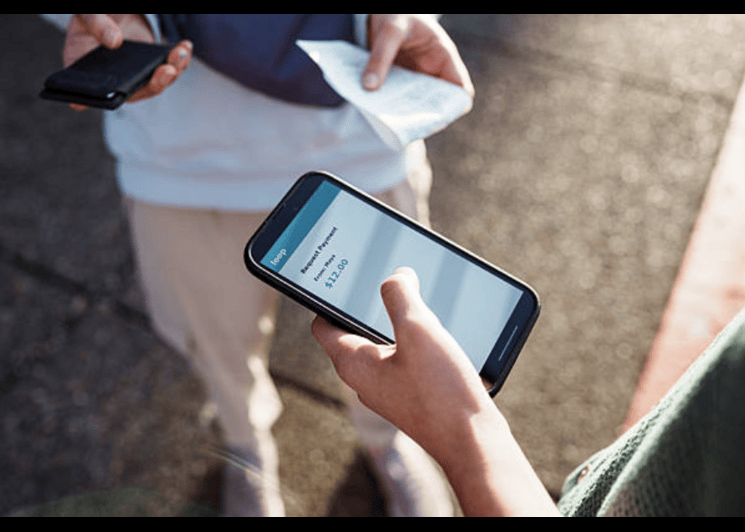Paid Advertising That Drives Campaign Results

Paid advertising is one of the most effective levers in modern marketing when approached with clarity and purpose. As a small business, scaling up and aligning your strategy with your audience, budget, and measurement makes all the difference. From understanding how online advertising works to launching an ad campaign and measuring results, using digital ads effectively can drive real growth, and tools like Bycard make managing budgets, tracking spend, and optimising campaigns much easier.
- Paid Advertising That Drives Campaign Results
- What Online Advertising Really Means
- Understanding Paid Advertising Pricing Models
- Designing an Ad Campaign That Works
- Why Digital Ads Matter
- Picking Channels for Your Online Advertising Strategy
- How Bycard Makes Paid Advertising Easier
- Avoiding Common Paid Advertising Mistakes
- Building an Effective Paid Advertising Strategy
- Key Data Points and Insights for Paid Advertising
What Online Advertising Really Means
Online advertising refers to placing promotional content on digital platforms and paying for visibility. Unlike traditional media, online advertising is measurable, flexible, and scalable. You can track impressions, clicks, conversions, and ROI, which is why more brands rely on paid advertising than ever before.
Key aspects include:
- Targeting: Choose who sees your ads based on demographics, interests, and behaviours.
- Bidding: Platforms use auctions to determine which ads appear and at what cost.
- Measurement: Monitor metrics like click-through rate, conversion rate, and ROAS.
Managing multiple campaigns and budgets can be tricky. Bycard’s virtual cards allow you to assign dedicated funds for each campaign, giving you control and visibility over online advertising spend.
Understanding Paid Advertising Pricing Models
Knowing how you pay for digital ads is crucial to planning budgets and optimising campaigns. Common pricing models include:
- CPC (Cost Per Click): You pay when someone clicks your ad. Good for driving traffic and leads.
- PPC (Pay Per Click): Similar to CPC; you only pay when a user engages. Most search ads use this model
- CPM (Cost Per Thousand Impressions): You pay for every 1,000 times your ad is shown. Ideal for brand awareness.
- CPA (Cost Per Acquisition): You pay only when a specific action is completed, such as a sale or sign-up. Best for performance-based campaigns.
- CPL (Cost Per Lead): You pay per submitted lead; commonly used for B2B or subscription-based campaigns.
Using Bycard, you can allocate virtual cards per ad campaign or channel, making it easier to track costs for CPC, CPM, or CPA campaigns, ensuring your digital ads budget is always controlled and optimised.
Designing an Ad Campaign That Works
A successful ad campaign starts with clear objectives. Are you aiming to generate leads, drive traffic, or increase sales? Defining goals ensures that your paid advertising efforts deliver results.
Steps for building an ad campaign:
- Set goals: Identify what success looks like e.g., 300 sales or 500 leads.
- Know your audience: Define personas to select the right platforms and messages.
- Choose channels: Select platforms (search engines, social media, display, video) aligned with goals and budget.
- Build creatives: Craft compelling digital ads with clear messaging for your audience.
- Configure tracking: Use pixels and analytics to measure results.
- Launch and optimise: Monitor performance, test variations, and adjust budgets as needed.
Why Digital Ads Matter
Digital ads offer advantages older media cannot:
- Reach and speed: Place ads in front of thousands of people quickly.
- Measurability: Track clicks and conversions, making it easy to know which ad campaign works.
- Precision targeting: Reach specific audiences based on behaviour or interests.
- Flexibility: Pause, adjust, and scale campaigns based on real-time performance.
With Bycard, each ad campaign’s budget is controlled via virtual cards, reducing overspending and improving ROI. Digital ads plus controlled budgets mean every paid advertising dollar works harder.
Picking Channels for Your Online Advertising Strategy
Here are typical channel types and when they make sense:
- Search engine advertising (e.g., Google Ads) – good when users are actively searching for products/services (intent).
- Social media advertising – good for engagement, awareness, brand building. Platforms like Meta Ads (Facebook/Instagram), TikTok Ads, LinkedIn Ads.
- Display advertising – good for broad reach, remarketing, branding, albeit lower intent.
- Video advertising – strong storytelling, engagement; e.g., YouTube or TikTok.
- Retargeting/remarketing – targeting people who already visited your website or engaged before; helps convert them.
- Native advertising/hybrid formats – ads that mimic organic content or mix elements of search, social & display.
When you choose your channel mix, also decide how you’ll fund each campaign. With Bycard you can allocate distinct budgets per channel by generating separate virtual cards for each (e.g., a card for TikTok Ads VCC, a card for LinkedIn Ads VCC) and monitor those journal entries, budget limits and reconciliation per campaign.
How Bycard Makes Paid Advertising Easier

Bycard helps you control your digital ads spend and manage multiple campaigns effortlessly. Here’s how to get started:
- Sign Up & Verify: Create an account on the app, verify your email/phone, and complete basic KYC/KYB verification.
- Create Virtual Cards: Generate a card for each ad campaign (e.g., Google Ads, Facebook Ads), set spending limits, and assign merchant restrictions if needed.
- Fund & Track: Add money to your wallet, recharge cards, and monitor transactions in real-time.
- Control & Secure: Freeze or cancel cards instantly and dispute any unauthorized charges.
When running multiple ad campaigns, create separate Bycard virtual cards for each channel (Facebook Ads, Google Ads, TikTok Ads). Set individual budgets and monitor transactions in real-time to ensure your paid advertising spend stays controlled and optimised.

Perfect Card Paid ads!

Avoiding Common Paid Advertising Mistakes
Common mistakes in online advertising include:
- Spreading budget too thin across many platforms.
- Skipping tracking and analytics setup.
- Ignoring campaign optimization.
- Poor targeting or wrong channel selection.
- Not aligning ad campaigns with the customer journey.
- Lack of spend visibility, leading to uncontrolled digital ads costs
Building an Effective Paid Advertising Strategy

Launching a successful paid advertising effort starts with clear objectives. Whether you aim to boost sales by a specific percentage or generate a set number of leads, knowing your target outcome guides every decision. Understanding your audience, who they are, where they spend time online, and what resonates with them, shapes the channels and messaging you choose.
Selecting the right mix of search, social, display, and video platforms ensures your ad campaign reaches the right people in the right places. From there, your budget and bid strategy, creative messaging, and analytics setup all work together to track performance and inform adjustments. Using digital ads strategically, iterating based on results, and controlling spend with tools like Bycard ensures your marketing investment is both efficient and measurable.
Key Data Points and Insights for Paid Advertising
Understanding the numbers behind your campaigns can make a big difference in performance and cost-efficiency. For example, the average cost to reach 1,000 people on Facebook is around US$13.75 in certain markets, so estimating the number of impressions you need is crucial for budgeting.
Search ads often deliver higher intent because users are actively looking for products or services, whereas display ads are more interruption-based and better suited for awareness and retargeting. Google’s network alone reaches over 90% of internet users across 2 million+ sites, highlighting the potential scale of digital advertising.
Using a solution like Bycard adds another layer of control: each channel can have its own virtual card, enabling clear visibility, receipt management, and reconciliation so your ad campaign spend stays on track.
Conclusion
Paid advertising isn’t simply “buying ads”, it’s deploying the right ads in the right places, to the right people, and measuring results so you can continuously improve. When you treat online advertising as an optimisation engine rather than a one‑time guess, the results speak for themselves.
By setting clear objectives, understanding your audience, choosing the right channels, running an ad campaign structured on testing and measurement, using digital ads properly, and controlling spend via a solution like Bycard, you align your marketing investment with business results.







